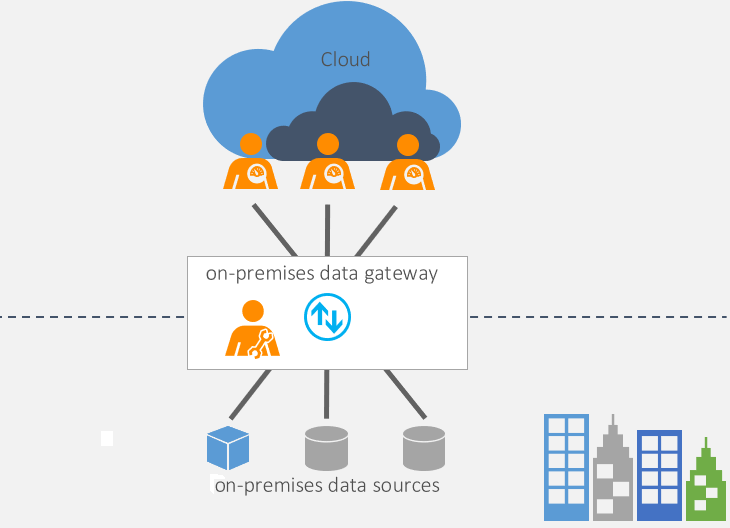On-Premises Data Gateways in Microsoft Fabric and PowerBI
 Vibha Trehan
Vibha TrehanWhat is an On-Prem Data Gateway:
The on-premises data gateway is a locally installed Windows client application that acts as a bridge between your local on-premises data sources and services in the Microsoft cloud.
Services Covered:
The gateway functions with multiple services including
Azure Analysis Services
Azure Data Factory
Azure Logic Apps
Microsoft Fabric
Power Apps
Power Automate
Power BI
How does the gateway works?

In the world of cloud services and on-premises data, securely moving data between these environments is crucial.
You don’t want to open your network to all kinds of inbound traffic—just like you wouldn’t want random people wandering into your kitchen while you’re preparing a meal. So, how does data securely get from your on-premises servers to the cloud without leaving the door wide open?
That’s where Gateway architecture comes in. Here a Gateway (powered by Azure Relay Service) acts as a middle-man handling all communication between the two parties of - Azure Services and On-Prem data sources.
The Restaurant Analogy:
Let’s break it down with a simple analogy. Imagine your on-premises system (like a database) is a chef in a kitchen, cloud services like Power BI or Microsoft Fabric are the customers, and the Azure Relay service is a waiter.
The Players:
Chef: Your on-prem data source (e.g., a SQL server).
Waiter: The Azure Relay service, acting as a secure middleman.
Customer: Cloud services that want data from the chef.
How It Works: Data Transfer, Just Like Serving a Meal
Customer Places an Order:
The customer (a cloud service like Power BI) makes a request for a meal (data). But remember, the customer can’t walk into the kitchen (on-prem system) to talk to the chef. They tell the waiter (Azure Relay) what they want.Waiter Relays the Order:
The waiter (Azure Relay) doesn’t go into the kitchen either. Instead, the chef (on-prem system) checks with the waiter periodically to see if there are any new orders (queries). This is key—no one is barging into the kitchen uninvited. The chef is the one making the outbound call to the waiter, ensuring security.Chef Prepares the Meal:
Once the chef gets the order, they prepare the meal (process the data request) inside the kitchen (on-prem network). They’re in control of the environment.Waiter Puts the Meal on the Tray:
When the meal is ready, the chef doesn’t bring it directly to the customer. Instead, they hand it to the waiter (Azure Relay), who temporarily holds the meal on a tray. At this point, the customer knows the meal is ready but needs to come pick it up.Customer Fetches the Meal:
The customer (cloud service) then asks the waiter for the meal. The data is retrieved from the tray and delivered securely to the customer’s table.
References:
Subscribe to my newsletter
Read articles from Vibha Trehan directly inside your inbox. Subscribe to the newsletter, and don't miss out.
Written by
